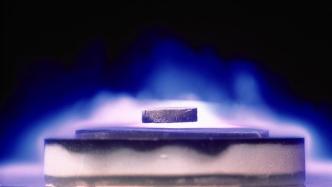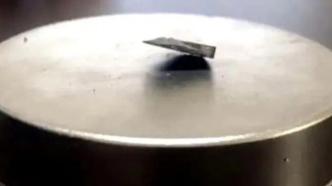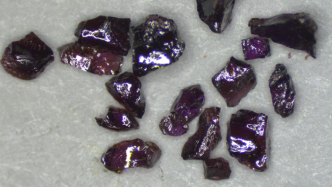

LK-99 single crystal sample does not contain cuprous sulfide impurities.
LK-99, a miraculous material that was announced more than 2 weeks ago by the Korean Quantum Energy Research Center company team and related teams to be able to achieve room temperature superconductivity, its myth is being ended.
At 17:47 on August 11, a preprinted paper submitted by Pascal Puphal, a scientist at the Max Planck Institute for Solid State Research in Stuttgart, Germany, may have completed the " final blow " to LK-99 .
According to the paper, they successfully synthesized a purple transparent LK-99 single crystal sample without cuprous sulfide impurities, and the possibility of superconductivity was ruled out after determination.
In addition, on August 16 local time, the official website of the international academic journal "Nature" published a news, "LK-99 is not a superconductor - how scientific detectives solved the mystery", sorting out this summer's most lively scientific events, and people's reflections.
LK-99 is a copper-doped lead apatite material. Now, after dozens of replication efforts, many experts say with confidence that the evidence shows that LK-99 is not a room-temperature superconductor, according to the aforementioned news article.
The aforementioned article was written by American science journalist and freelance writer Daniel Garisto. He writes that replication verification experiments and research work on LK-99 by scientists in different parts of the world and in laboratories have pieced together the answer to the mystery of why this material exhibits superconducting-like behavior.
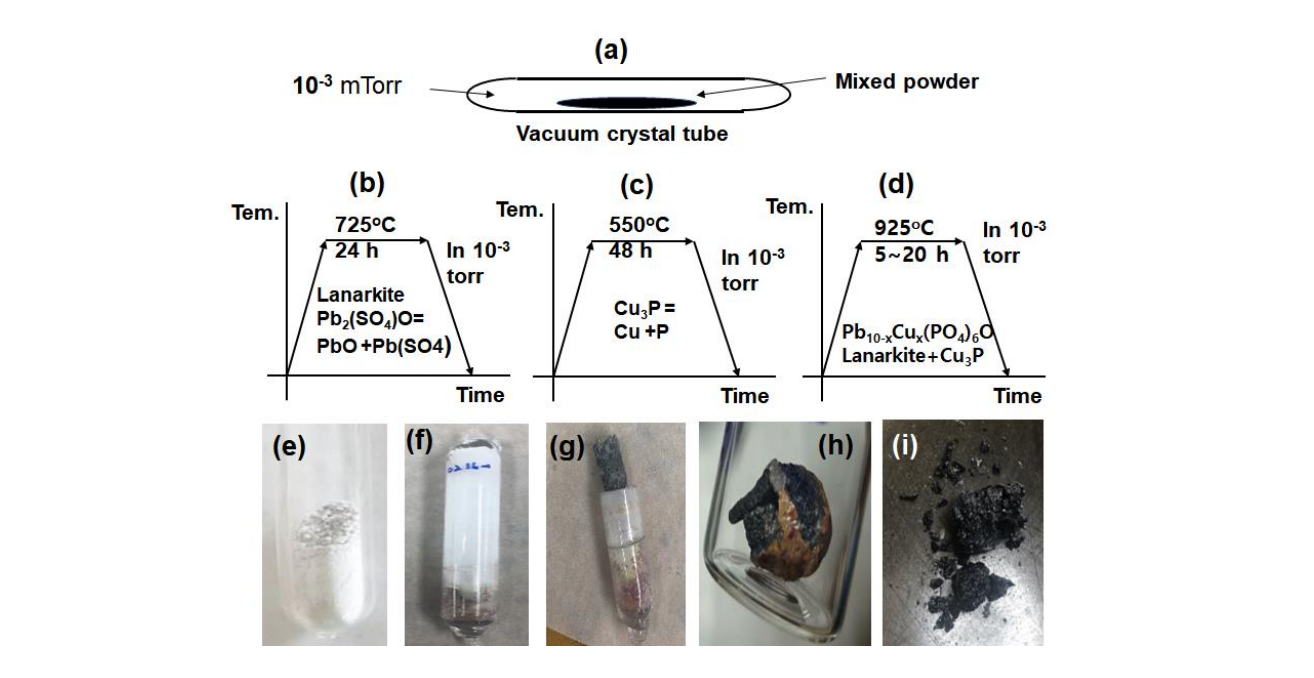
The Korean team's method of "firing" the LK-99.
The viral "semi-levitation" or levitation video
More than 2 weeks ago, on the morning of July 22, two papers claiming that LK-99 can superconduct under "room temperature + normal pressure" conditions were published on the preprint website arXiv. This is a copper-doped lead apatite material whose composition is Pb10-xCux(PO4)6O (0.9<x<1.1). The signed authors of the two papers are mainly members and former members of the relevant research team of the Korea Quantum Energy Research Center Corporation. The second paper was submitted by Hyun tak Kim, a research professor of physics at the College of William and Mary in the United States.
The characteristics presented by LK-99—semi-suspension above the magnet, the resistivity suddenly drops at a certain temperature, make people exclaim: Is it really the world's first room temperature and normal pressure superconducting material? Although the preprinted paper is a paper that has not been peer-reviewed and has not yet been officially published, the statement in the aforementioned paper and the video of LK-99 "semi-suspended" on the magnet released by Jin Xuande soon spread all over the Internet and detonated academics. circles and public opinion.
Is this a huge breakthrough, or an Oolong?
Exhibiting zero resistance below the transition temperature Tc and complete diamagnetism are two important properties of superconductors. However, the experimental data published by the South Korean team in the paper was considered insufficient to prove the LK-99 series superconductor, so it was questioned. Several international research teams have attempted to synthesize LK-99 to verify their experimental results.
Videos claiming to achieve complete magnetic levitation of LK-99 samples even appeared on the Chinese Internet websites Douyin and Bilibili (Bilibili), which attracted people's attention and reposted. But then the publisher of the relevant video clarified that it was fabricated and not a sample of LK-99.
accumulated evidence
Before being denied, some theoretical calculations even provided supporting evidence for "LK-99 is a room temperature superconductor".
At 17:58 on July 31, Sinead M. Griffin, a researcher at the Lawrence Berkeley National Laboratory (LBNL), submitted a paper titled "Related isolated flattened "Origin of correlated isolated flat bands in copper-substituted lead phosphate apatite" (Origin of correlated isolated flat bands in copper-substituted lead phosphate apatite) paper, said that the density functional theory calculation (DFT) was carried out on LK-99, and its isolated flat band correlated at the Fermi level was determined , "This is a common feature of high transition temperatures among established superconductor families."
If the copper ions are placed in the right place to replace the lead ions, the related compounds can display many of the key features of high-temperature superconductors, the paper says.
After the publication of the aforementioned preprinted paper, many people believed that LK-99 was very promising as a superconductor.
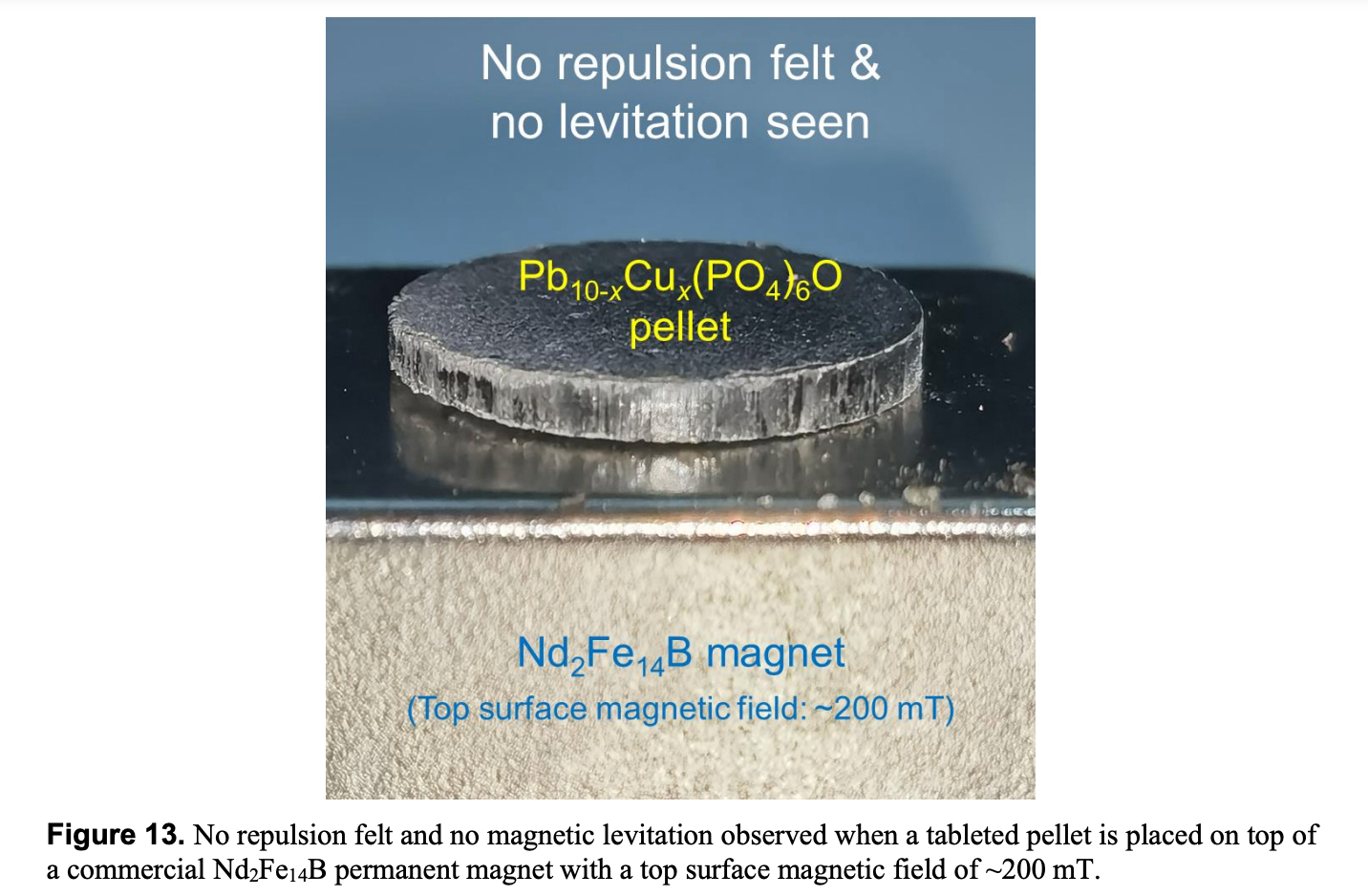
The research team of Beihang University submitted a preprint paper stating that no magnetic levitation phenomenon was observed in the LK-99 repeated experiment.
However, at 16:13 on July 31, the team of Professor Liu Zhiqi from the School of Materials Science and Engineering of Beihang University submitted a paper on the preprint website arXiv, stating that they synthesized the LK-99 sample according to the method published by the Korean team, and found no superconductivity. Magnetic levitation was also not observed when the sample in question was placed on top of a magnet at room temperature. The resistance of the material at room temperature is not zero.
At 14:59 on August 2, Sun Yue, a professor and doctoral supervisor at the School of Physics of Southeast University, submitted a paper on the preprint website arXiv, saying that one of the six samples was measured at a temperature above 100K (minus 173.15 degrees Celsius). Zero resistance, but no diamagnetism.
At 13:34 on August 6, researchers from Peking University’s Center for Quantum Materials Science (ICQM) submitted a paper on the preprint website arXiv, saying that although they successfully observed “magnetic semi-levitation” in some flake-like small fragments of LK-99 samples ” phenomenon, but it has been measured that there is no Meissner effect or zero resistance in its samples, so it does not have superconductivity. Experimental results show that its samples contain soft ferromagnetic components.
It was jointly completed by researchers from the Department of Physics and Chemistry of Princeton University in the United States, the Department of Chemistry and Biochemistry of the University of Oregon in the United States, and the Max Planck Institute for Solid State Chemical Physics in Germany. The printed paper stated that the research team synthesized the LK-99 sample, which was transparent, and the analysis results showed that the LK-99 sample did not exhibit high-temperature superconductivity; the substitution of copper is very unfavorable in thermodynamics; LK-99 is more Probably a magnet, not a room-temperature-atmospheric-pressure superconductor.
They performed X-ray imaging to determine the structure of the LK-99 sample, on which they performed rigorous calculations. It turns out that the "flat bands" in LK-99 arise from strongly localized electrons, which cannot "jump" in the way required for superconductors.
From impure sample to single crystal: the final push
For every 1 part copper-doped lead phosphate crystal (pure LK-99) "fired", 17 parts copper and 5 parts sulfur are produced. These residues generate large amounts of impurities, especially cuprous sulfide. This is reported by the Korean team in their paper.
The Korean team also pointed out in a preprint that at a certain temperature, the resistivity of LK-99 dropped tenfold. "104.8 degrees Celsius, I was like, wait a minute, I know that temperature," Prashant Jain, a chemist at the University of Illinois at Urbana-Champaign, told Nature News. 104 degrees Celsius is sulfur The temperature at which cuprous phase transition occurs. Below this temperature, the resistivity of cuprous sulfide drops sharply, a phenomenon almost identical to the so-called superconducting phase transition of LK-99.
At 20:57 on August 9th, Prashant Jain submitted a preprinted paper saying that this means that LK-99 must be synthesized without any cuprous sulfide in order to clearly verify whether LK-99 is Has superconducting properties.
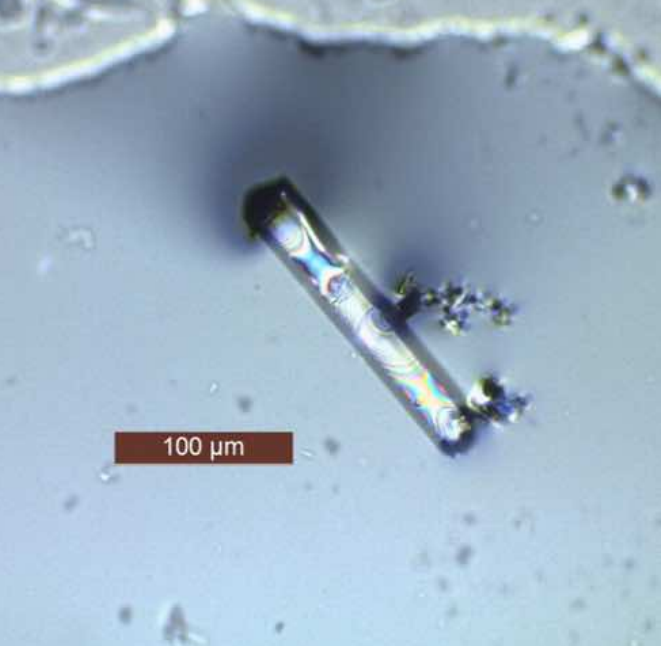
Transparent LK-99 sample.
Earlier, at 15:59 on August 8, the team of Luo (luò) Jianlin, a researcher at the Institute of Physics of the Chinese Academy of Sciences and a doctoral supervisor, submitted a preprinted paper, clearly stating, "We believe that the so-called superconductivity in LK-99 The behavior is most likely due to a first-order structural phase transition of cuprous sulfide around 385K (111.85 degrees Celsius), from a beta phase at high temperature to a gamma phase at low temperature, resulting in a decrease in resistivity."
In the experiment, they "fired" two kinds of LK-99 with different cuprous sulfide contents, measured their resistance, diamagnetism and other parameters, and compared them with the corresponding parameters of pure cuprous sulfide.
Luo Jianlin told The Paper that LK-99 is not superconducting! The experimental results show that it is an illusion that LK-99 can superconduct at normal pressure and room temperature, and this illusion comes from cuprous sulfide. Their work points to why the South Korean team mistook LK-99 for a superconductor.
The " final blow " to LK-99 may come from a crystal sample completely free of cuprous sulfide impurities.
At 17:47 on August 11, Pascal Puphal, a scientist at the Max Planck Institute for Solid State Research in Germany, submitted a preprint paper stating that he successfully synthesized a single crystal of LK-99, and the experimental results ruled out the existence of this crystal sample. The possibility of superconductivity. X-ray analysis revealed that the copper was unevenly distributed throughout the sample.
According to the paper, this crystal sample is highly insulating, and weak ferromagnetic properties were detected in the experiment, which may be due to
Caused by uneven distribution of copper substitution. The experimental results show that the previously claimed phenomenon of room-temperature superconductivity in LK-99 is very unlikely.
The title of the paper is "Single crystal synthesis, structure, and magnetism of Pb10−xCux(PO4)6O".
Regarding the preparation method of the aforementioned LK-99 single crystal sample, the paper states that the precursor powder is a mixture of 9PbO: 1CuO and 9NH4H2PO4. Subsequently, the powder was ball milled for 20 minutes, and the mixture was transferred into an alumina crucible into a furnace and heated to 750°C for 10 hours, followed by grinding and heating for another 10 hours. The sintered material was filled into a rubber mold, and cylindrical feed rods and seed rods were prepared by ball milling. The rubber was evacuated and pressed in water-filled stainless steel molds using a Riken Model S1-120 70,000 Newton press. All bars are heat treated at 800 degrees Celsius. During the first growth process, pellets were prepared in a die with a diameter of 4 mm using a Riken press. Single crystal growth was performed in an optical imaging furnace CSC FZ-T-10000 from Crystal Systems. Four halogen lamps with a power of 150 watts serve as heating sources.
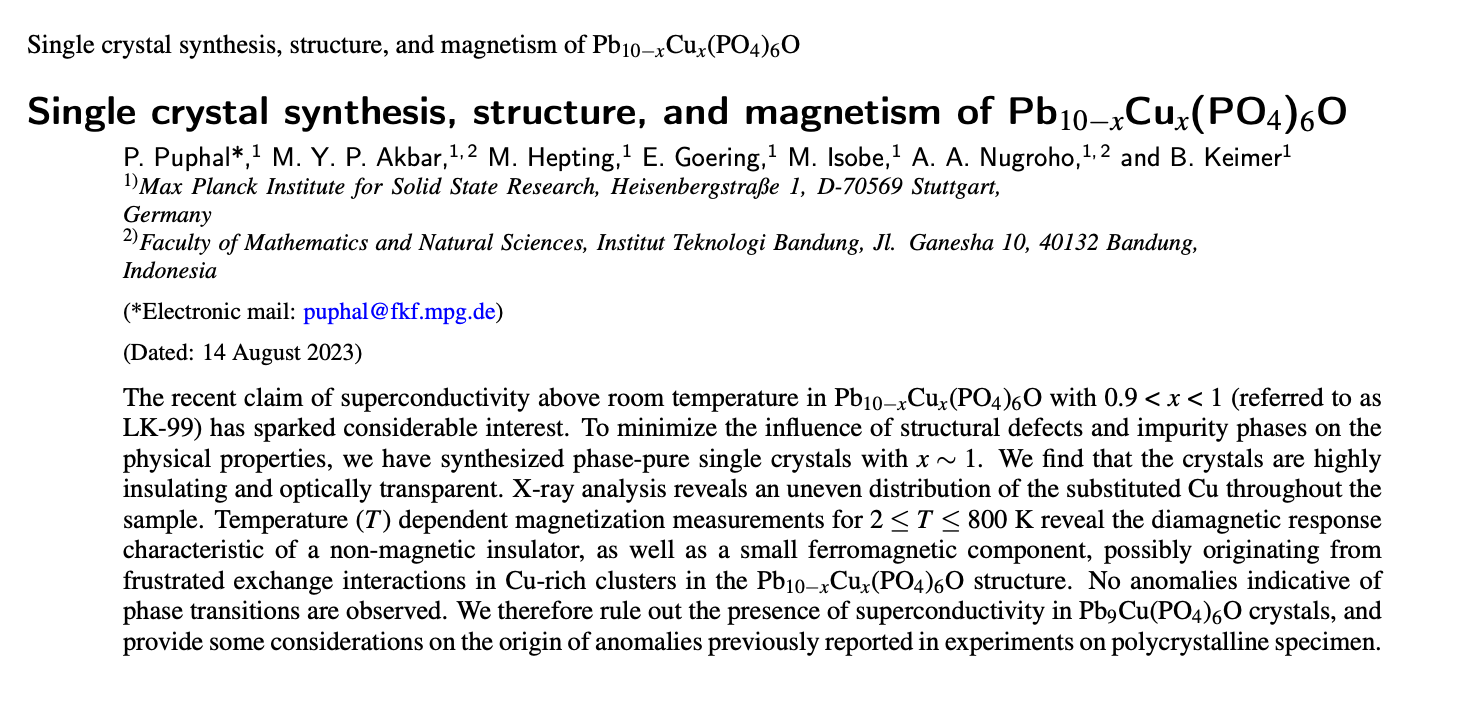
Pascal Puphal (Pascal Puphal), a scientist at the Max Planck Institute for Solid State Research in Germany, submitted a preprint paper stating that he successfully synthesized a single crystal of LK-99, and the experimental results ruled out the possibility of superconductivity in the crystal sample.
The research team avoided introducing sulfur into the LK-99 samples using a technique known as floating zone crystal growth. The crystals of Lk-99 they synthesized are transparent and purple in color. Its resistance is as high as several million ohms, showing slight ferromagnetism and diamagnetism, but not enough to achieve partial levitation.
The team believes that the signs of superconductivity seen in LK-99 can be attributed to cuprous sulfide impurities. However, the LK-99 crystals prepared by them do not contain cuprous sulfide impurities.
"This story shows exactly why we need single crystals," Pascal Pupal told Nature News. "When we have single crystals, we can clearly study the intrinsic properties of the system."
"I am an expert in the growth of single crystals using various techniques, with a special focus on growth at high pressures, such as floating zone-, hydrothermal-, flux - and Bridgman Growth." "I am working on different quantum spin systems, currently focusing on superconductors, but continuing with projects on topological systems, low-dimensional magnets and frustrated magnetism."
"reward"
Leslie Schoop, a solid-state chemist at Princeton University in New Jersey, is one of the authors of a preprint paper on LK-99 research by a joint U.S.-European team, according to Nature News. "Even before LK-99, I've been talking about how to use DFT carefully, and now I have the best story yet for next summer school," she told Nature News.
Prashant Jann points out the importance of old data that is often overlooked. The key measurement of the resistivity of cuprous sulfide that he cites comes from 62 years ago , published in 1951.
The only further confirmation will come when the Korean team shares their samples, Michael Fuhrer, a physicist at Monash University in Melbourne, Australia, told Nature News. " It's their responsibility to convince other people ," he said.
But for the claim that LK-99 can superconduct at room temperature, Inna Visik, an associate professor in the Department of Physics and Astronomy at the University of California, Davis, and an expert in condensed matter experiments, said that she believes that this matter has come to an end .
When cuprate superconductors were discovered in 1986, people immediately began exploring their properties. But nearly four decades later, the mechanism by which the material superconducts is still debated. Compared to this, the effort to explain LK-99 falls into place. The "sleuthing work" that brought together all the pieces of the original observations of LK-99 "I think is fantastic and relatively rare ," Inna Visik said.

